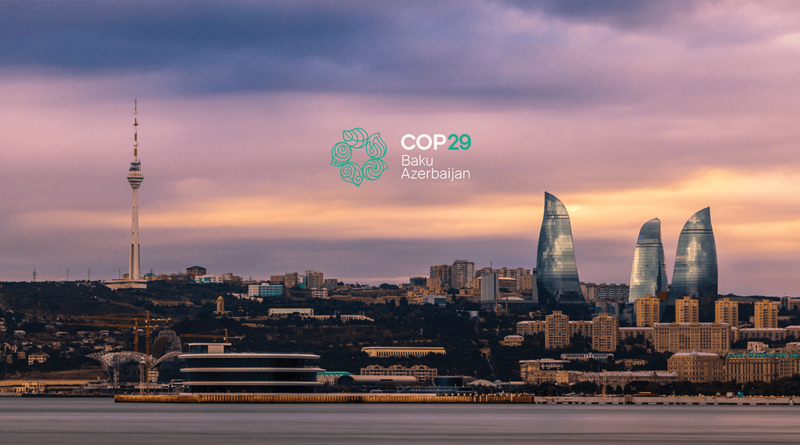Unlocking climate finance for developing and emerging economies will require more than commitment
Financial realities challenge development goals and the climate
Today, only 15% of the world’s investments in clean energy are in emerging economies (EMDEs) – excluding China. That may be surprising, since most of the world’s population (66%) lives in these countries. Due to their predicted growth, they will soon represent the majority of energy demand and emissions. However, with more than 700 million people worldwide (and more than 400 million in Africa) living in extreme poverty, these areas also have urgent priorities – often prioritizing development. economic first than emissions reduction.
Given the critical need for more investment in EMDEs for development and climate projects, how can climate finance policy solutions help, and what other measures might be needed?
Scaling up climate-friendly investments in EMDEs is difficult due to the heterogeneity reflected in high capital costs, often two to three times higher than in OECD countries – i.e. , the rich world. Factors that increase the cost of capital include currency exchange risk, project completion problems, regulatory uncertainty, contract performance risks, and asset forfeiture risks. This can be exacerbated by imperfect assessments of national risk premiums.
In a recently published study on climate investments in Africa, CATF found that the average cost of capital for electricity projects stands at 15.6% on the continent, making it a too high for African countries, which already lack basic energy resources. necessary for change, prioritizing decarbonization.
This high cost of capital is a status symbol and a hindrance to development and climate action. Most of the world’s funds from pension funds and insurance companies are at high risk with limited investment in infrastructure and EMDEs. Therefore, risks and costs often limit availability. Where financial assistance is available, it is focused on export projects (eg oil) for world markets that do not involve risks to the local economy or projects that have reliable procurement agreements. or government guarantees. Many EMDEs, however, are already burdened with debt and cannot provide guarantees. For others, challenges such as financial risks, lack of transmission equipment, local operational efficiency or lack of staff capacity, are also a challenge.
COP29 needs to produce more credible plans than commitments
A major focus at COP29 will be the new focus of global climate finance. Although rich countries need to significantly increase financial resources that can reduce risk premiums to open larger pools or private funds, many of the proposed solutions and policies have not been evaluated for clarity or scale.
In addition, most climate finance discussions today focus on high-level targets or specific projects, which emphasize the underlying realities and dynamics in developing countries. For effective policy and service planning and effective implementation, funding discussions must be based on specific, country- and region-specific factors.
Development and public funding in the EMDE region is currently limited and dominated by a development framework that prioritizes sectors that are often not supported by private funding, such as education, health and infrastructure. the community. According to the World Bank’s annual survey, the climate ranked only 12th out of 16 people are generally concerned about, and less than one in five people say that it is one of the six priorities in their lives.
In addition, the financial crisis and high levels of public debt are also straining public resources in many countries that are already facing many development challenges. Perhaps unsurprisingly, the Network for Greening the Financial System reports combined funding for climate mitigation and adaptation from $2-14 billion per year compared to an estimated ~$ 1 trillion per year required by EMDE for clean energy investments.
After COP29
Regardless of what financial commitments are agreed at COP29, world leaders and investors will urgently need to answer the following questions:
- Are currently proposed solutions adequate to meet such conditions, and if not, what other options are available?
- Which pathways are compatible with the development of decarbonization suitable for EMDEs?
- How can investment be improved to unlock growth and decarbonization?
There should be a greater focus on assessing the spread of proposed solutions and working with additional strategies to achieve development and decarbonization goals. Considering the possible limits of international concessional financing, we must be more careful on upstream actions that improve local investment conditions and promote wealth in local markets. Doing so would make climate action part of the development, not yet.
This means that policymakers need to broaden their focus beyond one-time clean energy projects and include policies that improve local conditions. This may include partnering with local companies and stakeholders to build large enabling infrastructure, such as transmission networks, that unlock future investment or work to improve efficiency and effectiveness. market performance to make them attractive to investors.
Addressing these questions will certainly raise difficult questions about the political, economic, and social feasibility of the pace of change, burden sharing between rich countries and EMDEs, and the level of risk that governments will take. need to embrace the rapidly developing technology. But failure to do so could increase the risk that such disruptions will significantly prolong the time it takes to disrupt the global energy system – and delay the climate action we urgently need to protect people everywhere.
#Unlocking #climate #finance #developing #emerging #economies #require #commitment
